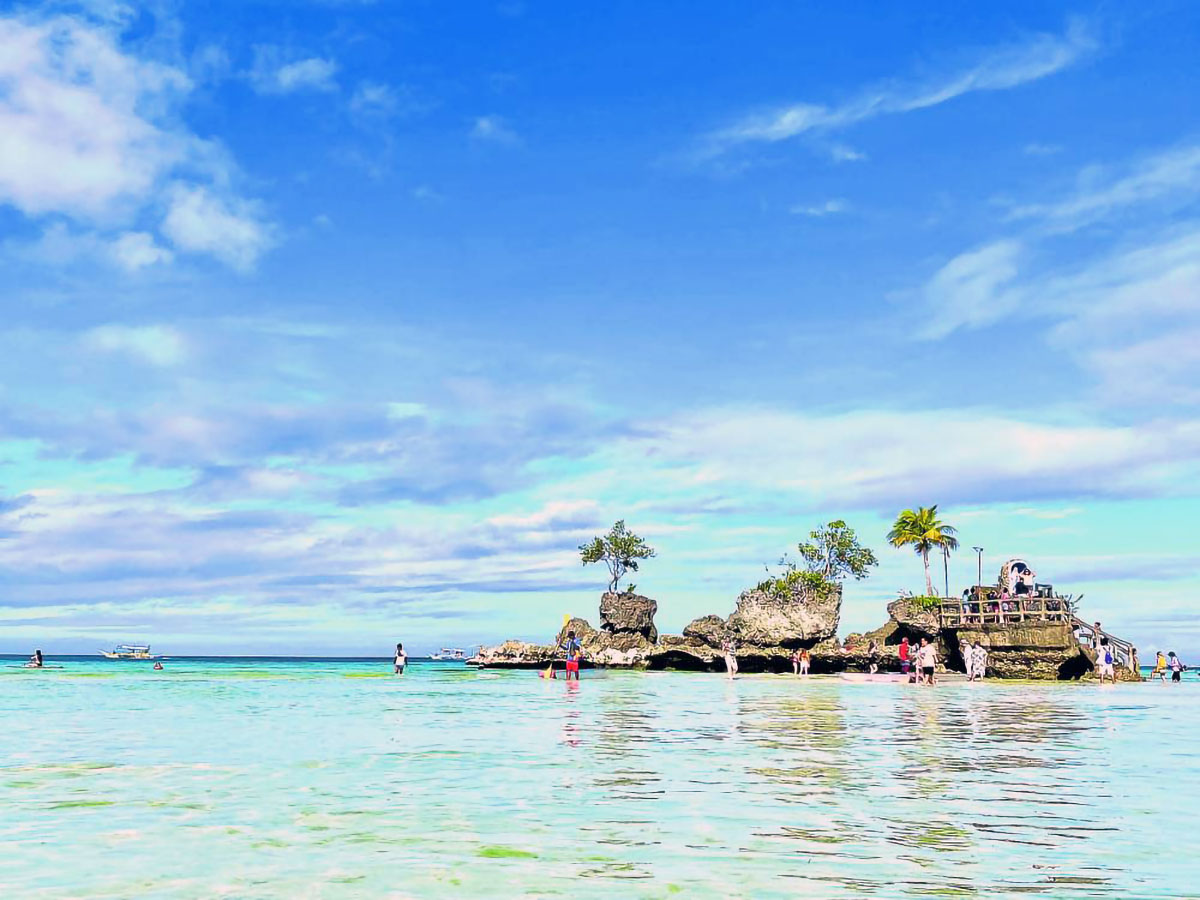
GETAWAY Boracay in Malay, Aklan, remains one of the country’s top tourist drawers, with almost 86,000 visitors arriving on the island in the first half of May. Local business owners, however, are worried about the impact of increasing power costs on their operations. —ROBERT JAWORSKI L. ABAÑO
An impending increase in electricity rates by the power distribution utility in Aklan province is expected to hurt both households and businesses that are already reeling from rotating power outages and a drop in the number of tourist arrivals.
The Aklan Electric Cooperative (Akelco) announced plans to raise its rates by P5 per kilowatt hour (kWh) in the province, including Boracay Island, in May, just a month after the power cooperative implemented an increase of P1.49/kWh.
The adjustment would come amid the power interruptions experienced in the premier resort island of Boracay in Malay town, which had been attributed to the National Grid Corp. of the Philippines (NGCP) in 2023 and 2024. The power interruptions could go for as long as 12 hours.
The rate hikes “posed significant financial challenges to both resort operators and tourists,” Boracay Foundation Inc. (BFI) chair Dindo Salazar told the Inquirer. This would mean higher operational costs for resorts, restaurants and other businesses, which would ultimately be passed on to tourists through increased room rates and prices of other goods and services on the island, he said.
Another effect would be the reduced energy consumption, which would see scaled-back amenities and features, and would affect guest experiences on the island.
“While we understand the economic pressures necessitating the rate hike, we urge Akelco to consider the broader impact on the island’s tourism sector and to explore alternative solutions or mitigations to minimize the financial burden on stakeholders,” Salazar said.
“Many resort owners are worried about the added costs which will likely have to be passed on to tourists. There is a consensus on the need for energy conservation measures but also a recognition of the challenges in implementing these without compromising guest satisfaction,” he added.
Impact on small businesses
Gil delos Santos, founder and trustee of the Small Players Association of Boracay, a group of micro, small and medium enterprises on the island, said the increase in electricity rates would worsen their problems, considering the frequent 12-hour outages on the island.
“A power rate increase will greatly affect businesses, especially the small enterprises, in [terms] of cost and productivity. Question is, if other electric cooperatives in the Philippines can manage to maintain their power rates, at least for now, why can’t [Akelco do that]?” he added.
Local business owner Fernando delos Reyes said it was their daily sustenance that would be most threatened by increased power rates.
“It will definitely affect [the residents’ and workers’] daily budget for food. What we [set aside] for food will be decreased because we have to put that in paying for the power. Our provincial and regional salary rates have not been moving, and bills have been increasing, so the financial status of residents will be affected,” he said.
Delos Reyes, a councilor of Boracay’s Barangay Yapak, spends an average of P3,000 a month in electricity bills, but has been paying an average of P5,000 in recent months due to prolonged use of air conditioner, owing to the intense heat.
The P5/kWh average increase would mean that Delos Reyes would now have to pay an average of more than P6,600 every month.
Akelco is still implementing its April 2024 rates of P14.9266/kWh for residential consumers, and P13.9849/kWh (low voltage) and P12.3924/kWh (high voltage) for commercial consumers.
Delos Santos also pays an average of P45,000 for the electricity consumption of his two charging stations for electric tricycles serving the island. If the increase in electricity rates continues, Delos Santos is expected to pay at least P61,000 monthly.
According to business owners in Boracay, tourism has improved since 2023 when they sounded the alarm over a decrease in arrivals, citing stringent entry rules following their 2018 closure for an environmental rehabilitation followed by the COVID-19 pandemic in 2020.Data from the Malay Tourism Office showed that the island welcomed 85,924 tourists from May 1 to May 15, less than half of the 182,647 arrivals in April.
Domestic tourists continue to comprise the bulk of arrivals on the island with 68,871 from May 1 to 15. The rest were foreigners (16,252) and overseas Filipino workers and other Filipinos based abroad (801).